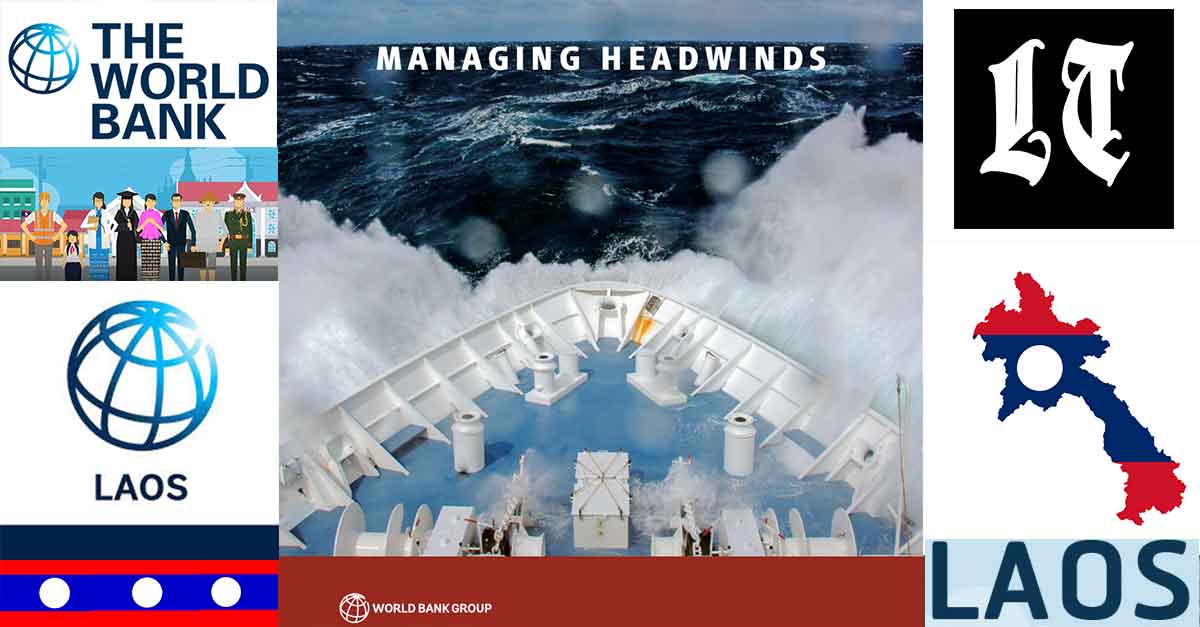Global economic headwinds are impacting on the East Asia Pacific, yet large infrastructure projects are still expected to accelerate economic growth in Laos, according to The World Bank.
The Bank sees “prospects for growth in developing East Asia and the Pacific (EAP) softening to 6.0 percent in 2019 and 2020, down from 6.3 percent in 2018”.
“This is to largely reflect global headwinds and a continued gradual policy-guided slowdown in China,” the report states.
“Still, the region’s economies weathered the financial markets volatility of 2018 relatively well largely due to effective policy frameworks and strong fundamentals, including diversified economies, flexible exchange rates, and solid policy buffers.
“While trade policy uncertainty has abated somewhat, global trade growth is likely to moderate further, according to Managing Headwinds, the April 2019 edition of the World Bank East Asia and Pacific Economic Update released here today.
“Domestic demand has remained strong in much of the region”, the report adds, “partly offsetting the impact of slowing exports.”
“The region’s resilient growth should bring about further poverty reduction, already at historic lows. By 2021, in fact, we expect extreme poverty to dip below 3 percent,” World Bank Vice President for East Asia and Pacific Victoria Kwakwa said.
“At the same time, however, half a billion people in the region remain economically insecure, at risk of falling back into poverty— an important reminder of the scale of the challenges facing policymakers.”
“China’s ongoing, policy-guided slowdown will lead to 6.2 percent growth in 2019 and 2020, down from 6.6 percent in 2018. Growth in Indonesia and Malaysia is projected to remain unchanged in 2019, while growth rates in Thailand and Vietnam are expected to be slightly lower in 2019.
“In the Philippines, a delay in approving the 2019 national government budget is expected to weigh on GDP growth in 2019, but growth is anticipated to pick up in 2020.”
“While the economic outlook for EAP remains largely positive, it is important to recognize that the region continues to face heightened pressures that began in 2018 and that could still have an adverse impact.
“Continued uncertainty stems from several factors including further deceleration in advanced economies, the possibility of a faster-than-expected slowdown in China, and unresolved trade tensions,” World Bank Acting Chief Economist for the East Asia and Pacific region Andrew Mason said.
“These continuing headwinds will need to be actively managed. To face these persistent risks the report details both short- and medium-term responses.”
“In the short term, it calls for strengthening reduced buffers, including rebuilding international reserves that were drawn upon to manage exchange rate volatility in 2018.
“Monetary policy may also need to be adjusted to become more neutral as risks of capital outflows have abated.
“The report highlights the importance of continued structural reforms in the medium term – to increase productivity, boost competitiveness, create better opportunities for the private sector, and strengthen countries’ human capital.
“The intensification of some risks also highlights the need for continued investments on social assistance and insurance programs to protect the most vulnerable, the report argues.
“Today, developing EAP has the lowest social assistance coverage among the poorest twenty percent of the population than any other developing region.”
Follow Economic News at The Laotian Times



